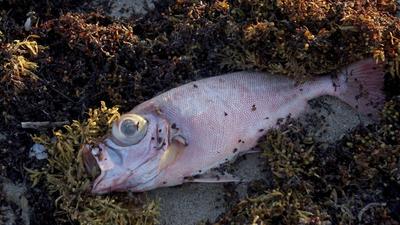Florida, a state that depends on water – fresh, estuarine and marine – for its economy and cultural identity more than most other states is in a dire situation of its own making. Decades of water and natural-resource mismanagement, recently accelerated, are coming home to roost. The current focus is on the red tide, classified as a harmful algal bloom, occurring along the Gulf Coast. But this crisis is not an outlier; it is part of the new normal. Either ongoing or in recent years, there have been harmful algal blooms in the Caloosahatchee River, St. Lucie River, St. Johns River, Florida Bay and the Indian River Lagoon. Indeed, at some point in the last few years much of Florida’s estuarine waters have been impacted by harmful algal blooms.
The organism that causes red tide, Karenia brevis, is natural to Florida’s Gulf coast. The red tide blooms in this region originate offshore, and depending on environmental conditions like winds and currents, can move inshore. Despite being a naturally occurring phenomenon, recent research suggests that human-introduced nutrients are worsening the situation. A scientific study published in 2007, for example, found that red tide was 20-fold more abundant in coastal waters (where it encounters nutrient-laden runoff) than in offshore waters where red tide originates. The study also found that red tide was 13-18-fold more abundant in recent years (1994-2002) than historically (1954-1963), and that the seasons in which red tide occurred had expanded from mostly in fall to now include fall, winter, and spring.
Click here to read full op-ed by Dr. Aaron Adams in the Orlando Sentinel.
Photo: (Joe Cavaretta/South Florida Sun-Sentinel via AP) (Joe Cavaretta / AP)




